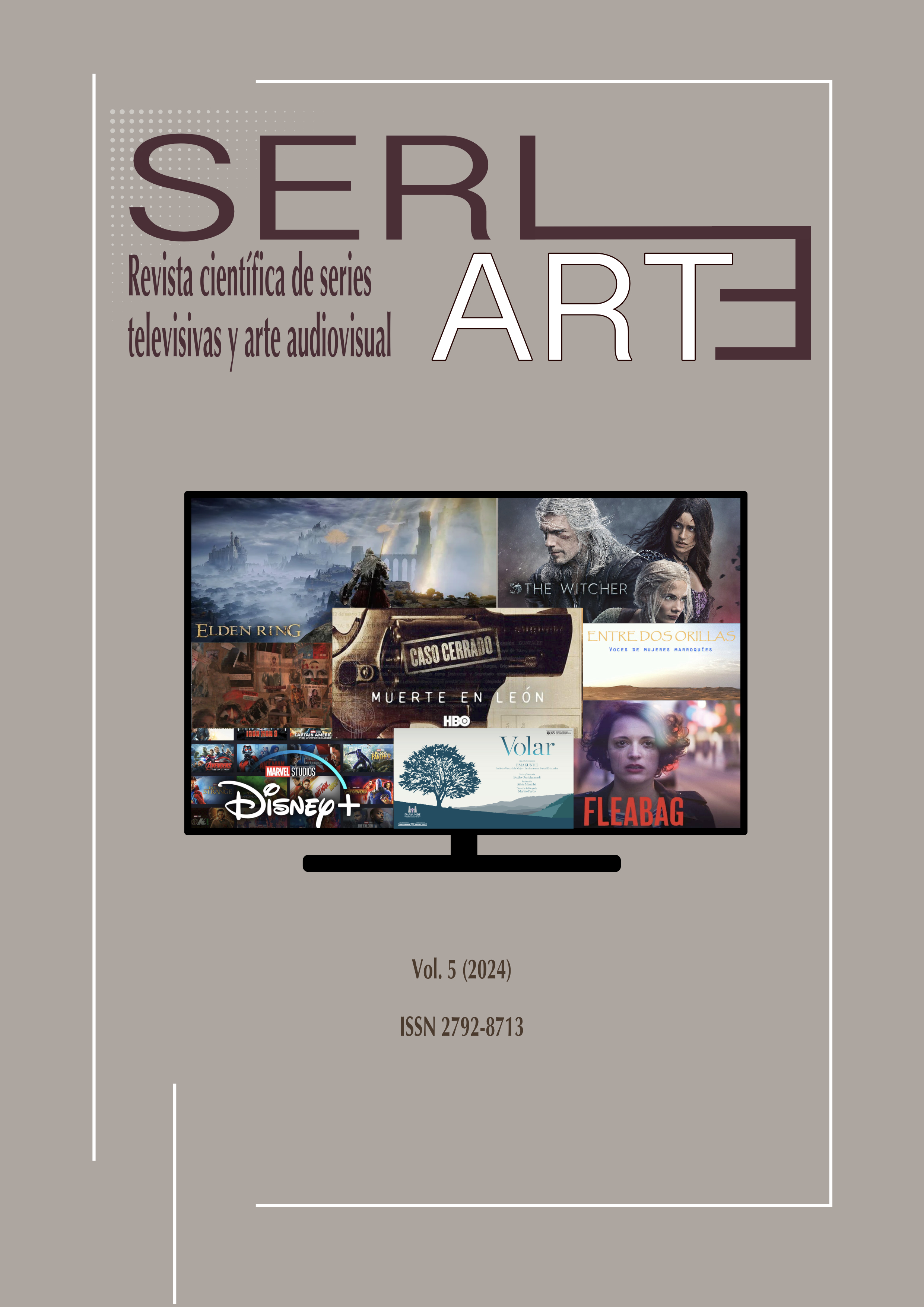El tratamiento narrativo de la magia en The Witcher. Sincronicidad y acausalidad en un universo de ficción junguiano
Main Article Content
Abstract
This article proposes a narrative analysis of the representation of magic and the magical in the series The Witcher(2019-), produced by Netflix and based on the literary saga of Geralt of Rivia created by the Polish writer Andrzej Sapkowski. The starting hypothesis is that in this production the narrative time of magic fits the three categories of the Jungian concept of synchronicity, the same that Sapkowski seems to handle in his stories and novels to recreate magical events. According to Jung, a synchronicity is a type of significant coincidence between a psychic event (a dream, a thought, a desire) and another of a physical nature (an encounter, an earthquake, a death) without any causal relationship between the two. There is neither chance nor premeditation. Two events occur in a space-time that can be immediate. Both in the books and in the series, the events concerning magic are produced by that same kind of acausal connection, which, however, is linked to beliefs and traditions related to certain mythologies and folklore.
Downloads
Article Details

This work is licensed under a Creative Commons Attribution-NonCommercial-NoDerivatives 4.0 International License.
References
BESSIÈRE, Irène (1993), Le récit fantastique. La poétique de l'incertain, París: Larousse.
CAILLOIS, Roger (1965), Au coeur du fantastique, París: Gallimard.
CASETTI, Franceso y DI CHIO, Federico (1996), Cómo analizar un film, Barcelona: Paidós.
CASTRO VALBUENA, Antonio (2020), «El héroe crepuscular como arquetipo mítico en la fantasía épica contemporánea. Geralt de Rivia, entre la luz y la oscuridad», Actio Nova. Revista de Teoría de la Literatura y Literatura Comparada, 6, pp. 53-82.
CORDASCO, Rachel (2021), «Andrzej Sapkowski», World Literature Today, (95), 1, pp. 7-8. DOI: https://doi.org/10.1353/wlt.2021.0183
FREIRE SÁNCHEZ, Alfonso (2022). Los antihéroes no nacen, se forjan: arco argumental y storytelling en el relato antiheroico, Barcelona, UOC.
GAWRONSKI, Slawomir & BAJOREK, Kinga (2020), «A Real Witcher. Slavic or Universal; from a Book, a Game or a TV Series? In the Circle of Multimedia Adaptations of a Fantasy Series of Novels “The Witcher” by A. Sapkowski», Arts (9), No. 4, p. 102. DOI: https://doi.org/10.3390/arts9040102
GONZÁLEZ, Alberto (2022), «Henry Cavill cumple su sueño y visita la sede de Warhammer». En <https://vandal.elespanol.com/noticia/r14817/henry-cavill-cumple-su-sueno-y-visita-la-sede-de-warhammer> (5 de julio de 2023).
IMRE, Anikó (2023), «Illiberal white fantasies and Netflix’s The Witcher», Journal of Ethnic and Migration Studies, pp 1-18. DOI: https://doi.org/10.1080/1369183X.2022.2156324
JACKSON, Rosemarie (2015), Fantasy, the literature of subversion, Nueva York: Routledge.
JUNG, Carlo Gustav (2009), Arquetipos e inconsciente colectivos, Barcelona: Paidós.
–––– (2012). La interpretación de la naturaleza y la psique, Barcelona: Paidós.
–––– (2015). Psicología y alquimia, Madrid: Trotta.
Krapyvnytska, Marta (2022), «The Theme of Magic in Andrzej Sapkowski’s The Witcher Saga Cycle of Novels», NaUKMA Researh Papers. Literary Studies, 3, pp. 91-99. DOI: https://doi.org/10.18523/2618-0537.2022.3.91-99
LINDORFF, Dave (2004), Pauli and Jung. The Meeting of Two Great Minds, Wheaton, Illinois: Quest Books.
LÓPEZ SANTOS, Miriam, «El género gótico. ¿Génesis de la literatura fantástica?»
En: <https://www.cervantesvirtual.com/obra-visor/el-genero-gotico-genesis-de-la-literatura-fantastica/html/458dbc94-a0f8-11e1-b1fb-00163ebf5e63_6.html#I_0_> (12 de julio de 2023).
MAÑAS, Cruz y LOREDO, José Carlos (2020), «Psicología profunda y género oracular: una aproximación al I Ching en el Centro Eranos», Revista de historia de la psicología, 41 (4), pp. 16-23. DOI: https://doi.org/10.5093/rhp2020a17
MICHALSKA, Anna M. (2020), Otherness and Intertextuality in The Witcher. The Duality of Experiencing Andrzej Sapkowski’s Universe (Tesis doctoral).
MICHUŁKA, Dorota (2010) «Looking for Identity: Polish Children’s Fantasy Then and Now». Filoteknos, 84.
MITRY, Jean (2002), Estética y psicología del cine: Las formas, Madrid: Siglo XXI.
–––– (2002), Estética y psicología del cine: Las estructuras, Madrid: Siglo XXI.
MÜNSTERBERG, Hugo (2004), The Film. A Psycological Study, Nueva York: Dover Publications.
NICHOLS, Sallie (2019), Jung y el tarot: un viaje arquetípico, Barcelona: Kairós.
O´NEILL, Timothy R. (1979), The Individuated Hobbit: Jung, Tolkien, and the Archetypes of Middle-Earth, Boston, Massacgusetts: Houghton Mifflin Harcourt.
PORADECKI, Mateusz (2020), «The limits of magic: A study in breaking through barriers in fantasy fiction», Acta Universitatis Lodziensis. Folia Litteraria Polonica, 57 (2), p. 113-128. DOI: https://doi.org/10.18778/1505-9057.57.06
ROAS, David. (2001). «La amenaza de lo fantástico», Teorías de lo fantástico, Madrid: Arco Libros, pp. 17-44.
SÁNCHEZ-BIOSCA, Vicente (1996), El montaje cinematográfico. Teoría y análisis, Barcelona: Paidós.
TODOROV, Tzvetan (2016), Introducción a la literatura fantástica, Ciudad de México: Coyoacán.
VAX, Louis (1973), Arte y literatura fantásticas, Buenos Aires: Eudeba.





